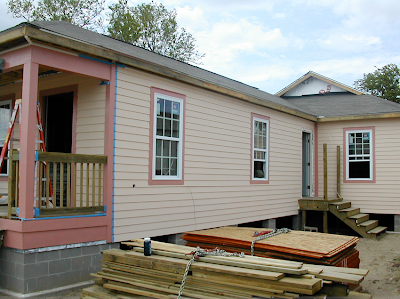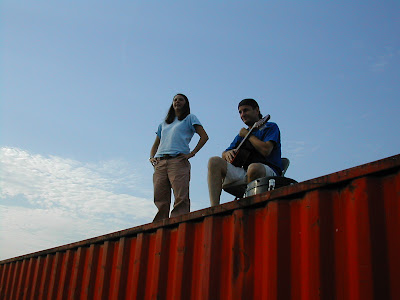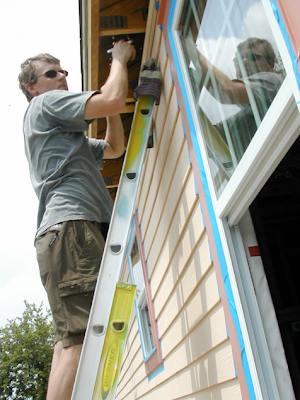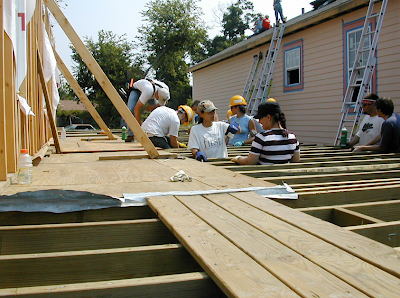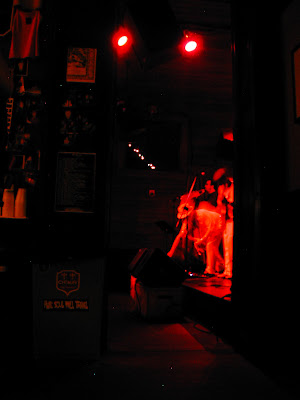I'm back from New Orleans and have had some time to digest what we did and what we saw. After trying to come up with a way to understand and to organize my thoughts about what I experienced there, I am left with no concrete summary. I have no overarching understanding of where the city is or what it might look like a year from now, five years from now or how long it will take for New Orleans to be 'rebuilt.' My feeling is that New Orleans remains deeply wounded, and a year from now, much of the city will still be a mess.
Our time there was short and our contribution to the many homes being built as part of the Musicians' Village was relatively small. Our view of the city was limited- all of us were lucky enough to get tours outside of just the French quarter where we stayed and the Upper Ninth Ward where we worked, but in one week you can only do and see so much.
But we saw so much and contributed a great deal- much more than I thought we would.
At first we worked on a row of houses that were near completion and helped prepare an area of the worksite where at least a dozen homes were starting to go up- where it seemed like a new floor was being started every other day.
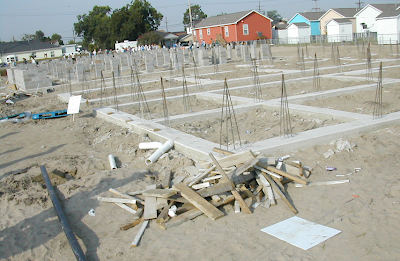
Later in the week, we worked on two houses: one just springing from the earth, the other perhaps two-thirds done. We each jumped into specific projects: fixing the flooring, soffit and fascia installation, painting the trim, etc. Mostly we jumped into the middle of ongoing projects and left before they were complete. Five days is a short time in terms of home building. Regardless, each day hundreds of volunteers from all over the country and right down the street, showed up in the early morning sun and hooked up with team leaders to pick up where the work left off the day before. We worked hard and each left our mark.
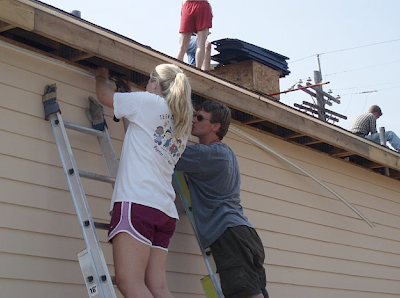 Photo by Jenna Logue
Photo by Jenna Logue
Our work with Habitat was more or less what I thought it would be. I did not know the exact work we would do, but the experience was not surprising except the size of the overall project. The number of homes being built at once and how scale impacted the experience of being onsite was more intense and a little less organized than I thought it would be. What I really did not anticipate at all was how our team of eight would interact, our encounters with Berklee alumni, how raw the wounds sustained during the flood still are and the response to our journey by people we met.
It would have been tough to predict how the eight of us would interact as few of us knew each other well before we left. I was surprised by how quickly everyone opened up. I imagine some of us are generally slower to warm up to new people than any of us were on this journey. All of us are very grateful for this opportunity, and I do not know what factors exactly enabled us to connect, coordinate and keep our energy so high from the first moment to the last. Adrenaline, gratitude, good people, good luck, great organization (Roya rocks!)- there were a lot of elements that came together to make things work so well, and I want to add my voice to the chorus of thanks to each of the seven traveling builders I shared this time with and to Berklee and each of the individual advocates who initiated and funded this opportunity.
 Photo by Jenna Logue
Photo by Jenna Logue
Shortly after we were selected for this experience, we were notified of an alumni dinner we were to attend, planned for Wednesday night. Not being a Berklee Alumnus and not working in Alumni Affairs, I was not sure what to expect. What happened was a wonderful group of Berklee students from decades ago to 'coming this fall' showed up. We talked about recent changes at Berklee and they shared their stories: Berklee stories, Katrina stories, New Orleans stories and musician stories all overlapping and interwoven.
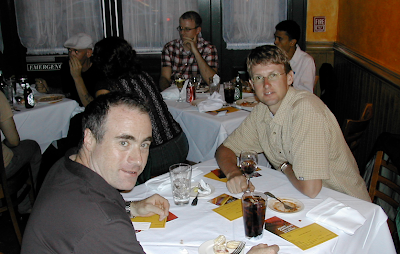
The memories of the flood, told by alumni, the police officer who gave us a ride home from the work site, and other people we encountered each day, are so fresh that you almost forget that almost 2 years have passed. Driving around parts of the city and seeing entire neighborhoods standing ruined and vacant, it is hard to believe that almost 2 years have passed.
The local news reported that 60 percent of the pre-flood population has returned. They measure this by the number of addresses receiving mail. By this standard, people living at addresses with homes that are totally uninhabitable but have FEMA trailers hooked up to the property's sewage and electricity are being included in the totals of 'people who have returned.' They may be back in New Orleans, or maybe they never left, but they are not yet home. I saw hundreds of examples of this and only drove around a few streets.
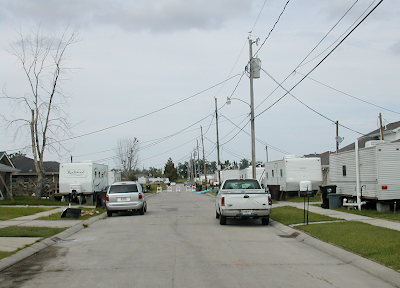
As the week went on and we met new people, a distinct pattern emerged. People wanted to tell their stories. The grief was still front and center in the telling. Us listening and being there, caring and wanting to hear, was deeply appreciated and when folks heard what we were doing, they were genuinely grateful. You imagine that when people hear you are volunteering to build affordable low income housing that they will say something like 'That's great' or 'Thanks for doing that' but the response I heard time and time again was that what people heard us describing was not just building housing for people who need help affording it. They heard that we traveled a long way to help rebuild a city that needs help and is not getting enough. They heard that we worked at a place that understood that this mattered enough to make it happen. Many of the people who thanked us will not benefit personally from what we did. They did not personally know anyone who would benefit directly. Many will probably never even see the Musicians' Village or ever travel through that particular part of the Upper Ninth Ward. But every 'thank you' was conveyed from someone who felt personally grateful. I think this comes in part from the rawness of the memories of the flood and loss each survivor suffered.
I think this also comes from the clear disconnect between the promises made after the disaster- promises that New Orleans would not be abandoned to what remained of her own devices- and the reality, which is that streets still lack street signs. Buses still rest on their sides. Intersections do not have traffic lights. Flotsam and jetsam is still washed up in piles, in alleys, in yards. Housing plots still hold carcasses of houses or stand void of anything save a concrete slab and tall weeds. Law enforcement is exhausted and the residents are exhausted. Spray painted warnings on shells of former homes warn that looters will be killed. A bartender we met one night described how her boyfriend was walking home the night before and had been shot at. Several musicians described how the more time passes without residents being able to recover and return in a timely manner, the more non-natives are moving into the city and booking the gigs that locals used to claim. Then, when former residents are able to return, they can't find work.
 Photo by Jenna Logue
Photo by Jenna Logue
It is my hope that more people will find or create opportunities like the one Berklee created and that fresh political energy will either see the need and act out of obligation or, at the very least, recognize that fulfilling the promise to not abandon New Orleans is work that will more than pay for itself once started in earnest.
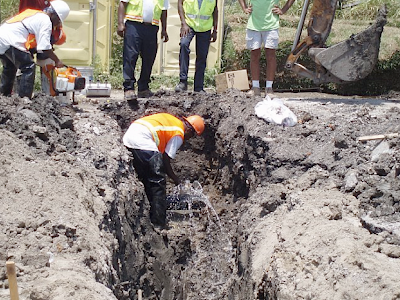 Photo by Jenna Logue
Photo by Jenna Logue
Our hammering, painting, pouring concrete and our listening was fulfilling work that gave us as much as it gave the soon-to-be homeowners who worked in the hot sun beside us and the survivors we met as we walked awhile in the cracked but not abandoned streets of New Orleans and the Parishes.
-Christopher Jones
June 2007












